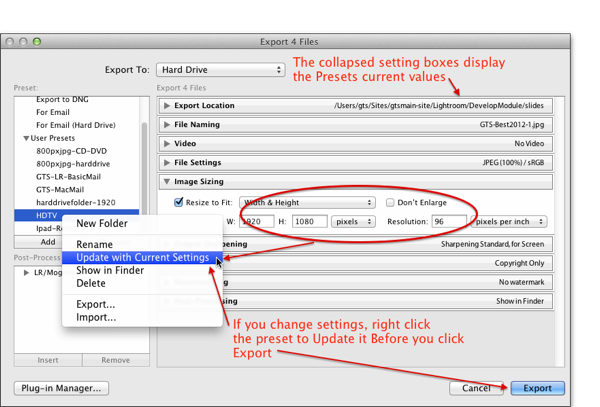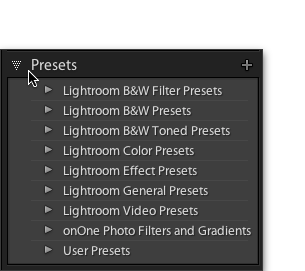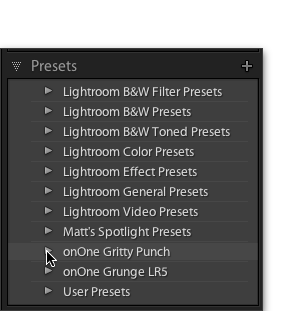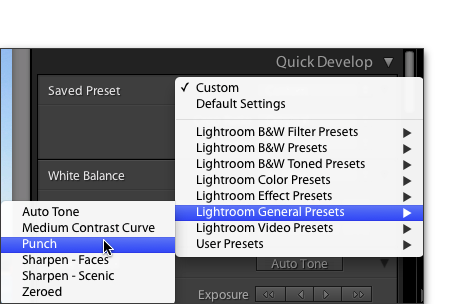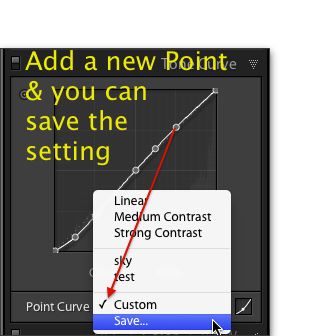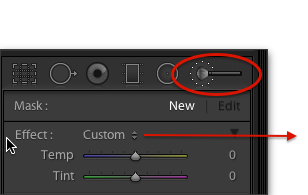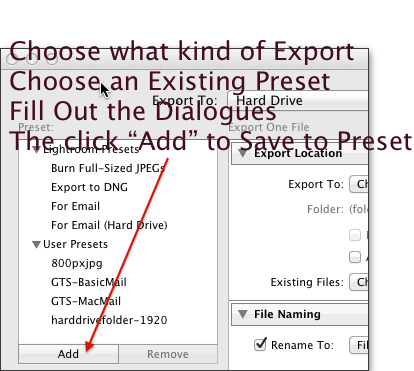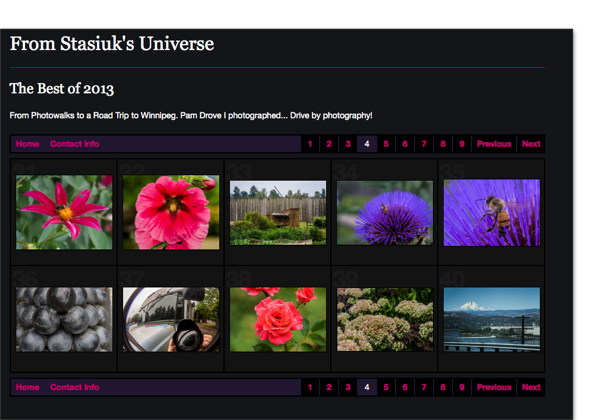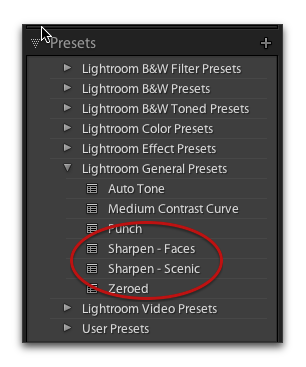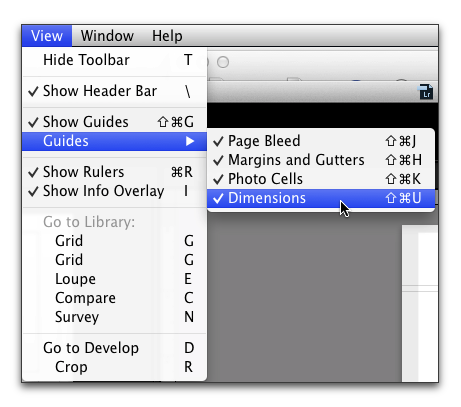Importing and Merging catalogues in Lightroom
The Menu item is:
File > Import From Another Catalogue…
How you Import and Sync Images and Metadata from different catalogues will depend on your “setup”.
- A: Merging catalogues on your system or external drive(s)
- B: Importing from another computer, either a laptop or desktop (e.g.: when shooting in the field)
Here are the main steps to do an import from another catalogue…
Step A:
Determine the location of the catalogues on the COMPUTER(s).
PC default Location c:\users\my pictures\Lightroom\
Mac Default Location: //Users/[user name]/Pictures/Lightroom/
This just helps you find them for the next step…
Step 1.
Start Lightroom loading your Master or Main Catalogue.
(Hold down the alt/option key when you startup Lightroom) Note that, Lightroom defaults to loading the last loaded catalogue…
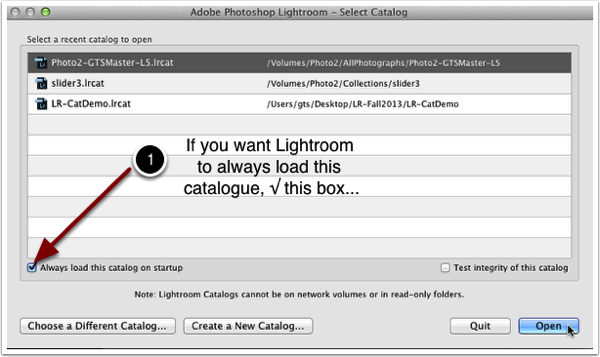
Step 2:
The Menu item is:
File > Importing From Another Catalogue.Use
Use the Mac’s Finder or the PC’s Windows Explorer to locate the “Other” catalogue.
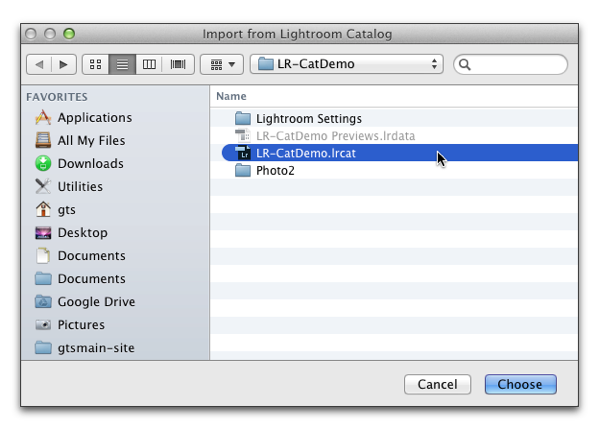
A double click on the .lrcat file will open the dialogue box below…
Step 3:
Check √ the Show Preview box lower left to see the thumbnails in the Import Catalogue.
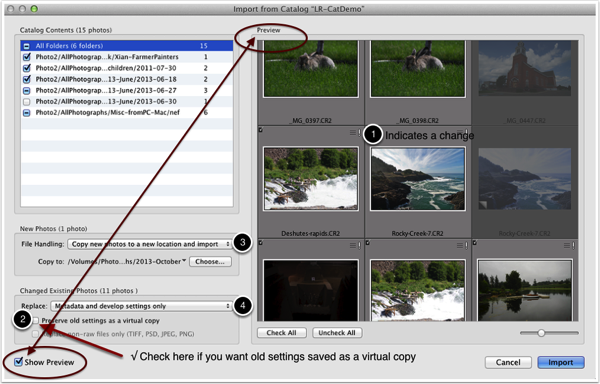
Number 1 in image above…
The 3 bars and the exclamation point indicates that there is “new” data
Number 2 in image above…
If you want, you may choose to preserve “Old” setting in your CURRENT catalogue, LR will make a virtual copy for you.
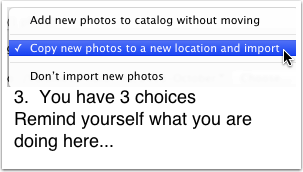
Number 3 in image above…
Choice #1:
Add New Photos to Catalogue without moving…
Use this option if you are happy with where the files are located, and you just want to tell LR where they are…
Choice #2:
Copy new photos to a new location and import…
Your photos are on a Laptop or another computer, or you are adding or consolidating your photos into a single catalogue…
Choice #3:
Don’t Import new photos, You just want the metadata
Number 4 in Image Above… Replace:
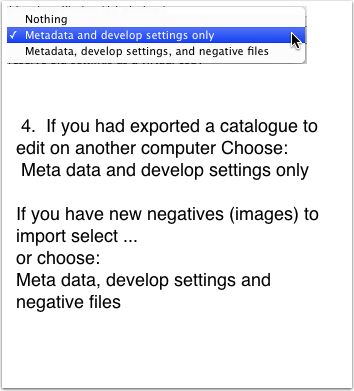
Step 4 Click Import…
Other Hints… (Working in the field)
If you are using a second copy of LR on a Laptop and you are using LR’s default location to store the photos, when you get back to your desktop you will have to do the following.
1. Using your laptop, plug-in an external drive.
2. Export your “Shoot" as a Catalogue to the external Drive.
Menu:
File > Export as Catalogue… To the External Drive.
3. Eject the External drive from the laptop and plug it into your desktop
4. Load your master Catalogue in LR and use the Menu:
File > Import from another Catalogue
Follow the above import steps…
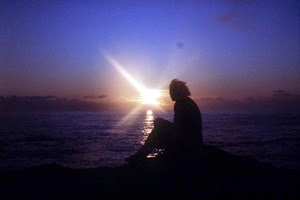 If you really want to celebrate the Equinox you can also take a photo (or a selfie) of a sunset on the 22nd or a sunrise on the 23rd. On those days the sun will rise directly out of the east and set directly in the west! Because the sun is at or near the Celestial Equator, the Earth’s Equator drawn in the sky... The sun will be really close the the East and West cardinal points for 3 or 4 days. So, if the weather isn’t coop- erating you have a three or four day window to take the photograph. This is a way for you to fix in your mind, the direction of East and West
If you really want to celebrate the Equinox you can also take a photo (or a selfie) of a sunset on the 22nd or a sunrise on the 23rd. On those days the sun will rise directly out of the east and set directly in the west! Because the sun is at or near the Celestial Equator, the Earth’s Equator drawn in the sky... The sun will be really close the the East and West cardinal points for 3 or 4 days. So, if the weather isn’t coop- erating you have a three or four day window to take the photograph. This is a way for you to fix in your mind, the direction of East and West 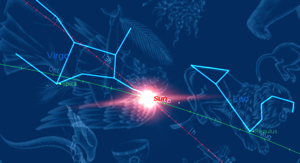 In 2014, behind the Sun, with the aid of a Planetarium Program (Starry Night Pro), we can see that the Sun and the Celestial Equator is located between the constellations of Leo and Aquarius. No where near the Milky Way.
In 2014, behind the Sun, with the aid of a Planetarium Program (Starry Night Pro), we can see that the Sun and the Celestial Equator is located between the constellations of Leo and Aquarius. No where near the Milky Way.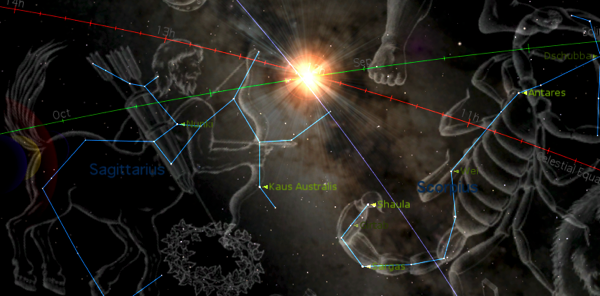











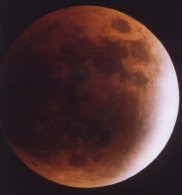
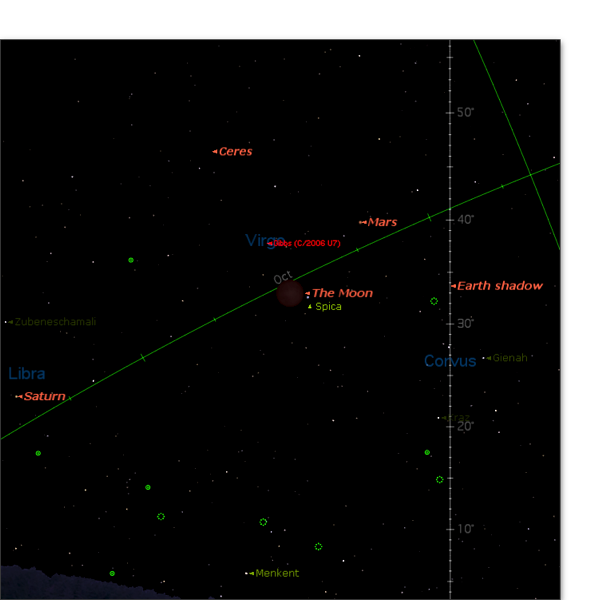

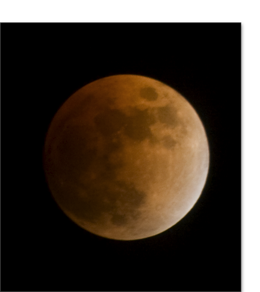
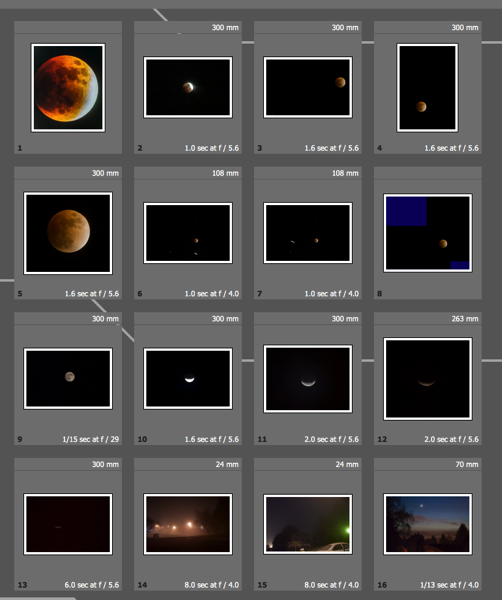

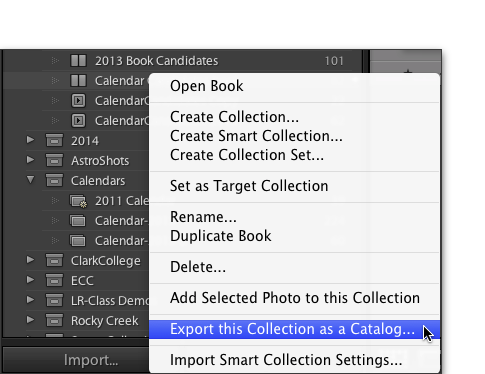
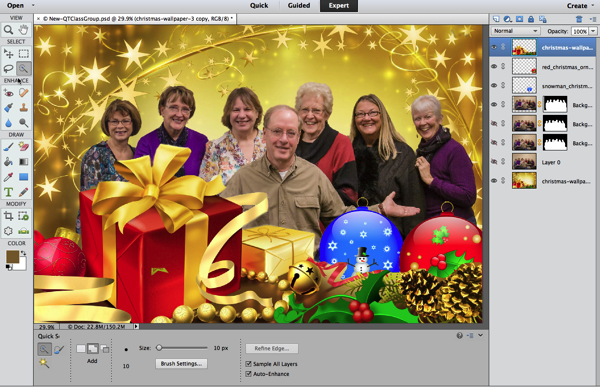
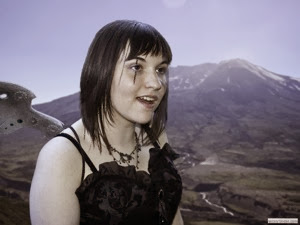
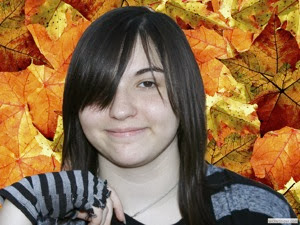
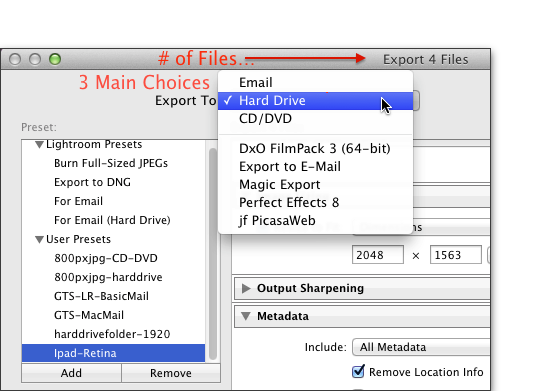 Where? To an email, to a folder on a hard/flash drive, to a DVD/CD.
Where? To an email, to a folder on a hard/flash drive, to a DVD/CD.